New members! Discover the many new additions to our Network
Here are the 9 latest additions to the EUROPARC Network. A hearty WELCOME!
AUSTRIA
UNESCO Chair – Sustainable Management of Conservation Areas
The UNESCO Chair is based at Carinthia University of Applied Sciences and aims to provide research and inspiring learning experiences for nature conservation in the 21st century. The program was launched in 1992, to serve as a network for higher education and research institutions all over the world to pool their resources, both human and material, to address pressing challenges and contribute to the development of their societies. Find more information here: UNESCO Chair – Sustainable Management of Conservation Areas.
FRANCE
Federation of Catalonia Nature Reserves
The Pyrénées-Orientales present an extremely rich and varied heritage of flora and fauna. The Federation of Catalonia Nature Reserves was created in 1991 to manage and preserve the nature reserves in that region. From 2007 it coordinates all the work being done in the reserves in order to implement public policies. This includes Grenelle de l’Eenvironnement, regional scheme for biodiversity, departmental scheme of natural areas, threatened species subject to a National Action Plan and many more. Learn more about the role of the Federation here.
GERMANY
Mountain Bike Tourism Forum Germany
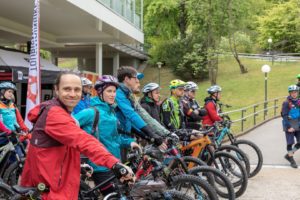
Photo by Anatole Serexhe
The Mountain Bike Tourism Forum Germany, based in Leipzig, works for the professionalisation of national bike tourism, tapping into the great potential that this outdoor sport has in Germany.
The forum functions as a space for networking and dialogue between the sustainable development of rural areas and peri-urban recreation opportunities for industry stakeholders.
GREECE
Thermaikos Gulf Protected Areas Management Authority
The Thermaikos Gulf Protected Areas is located on the west coast of the Thermaikos gulf, place of one of the most important ecosystems in Greece: the wetland complex which includes the Lagoon of Kalochori, the estuary of the Gallikos river, the delta of the Axios river as well as its riverbed up to the border with FYROM, the estuary of the Loudias river, the delta of the Aliakmon river, the wetland of Nea Agathoupoli and the Alyki Kitrous wetlands.
The Thermaikos Gulf Protected Areas Management Authority is based in Chlastra, Thessaloniki, and aims to manage the protected area and preserve its flora and fauna, to promote eco-tourism and sustainable development, to inform and raise awareness of the local community and visitors.
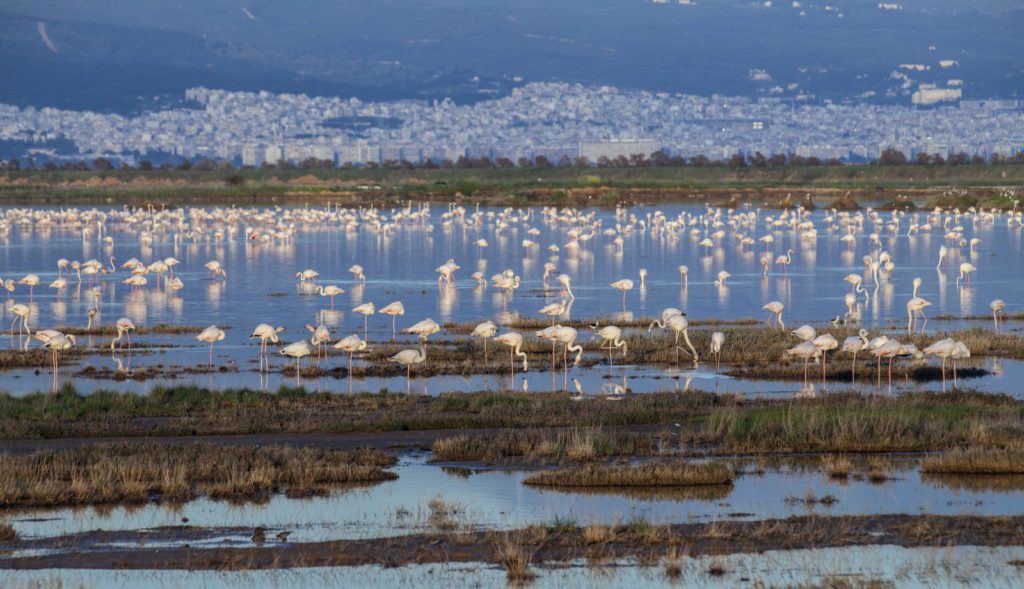
Kalochori Lagoon – Dimos Voudouragakis – Thermaikos Gulf Protected Areas archive
ITALY
Legambiente Onlus
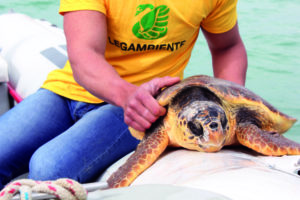
@legambienteonlus
Legambiente Onlus is an Italian non-profit association that works for environment protection in all its forms. For over 40 years they have been fighting against pollution, illegality and injustice for a better quality of life for people and nature.
The association also works on species at risk conservation: thanks to the work done by the Marine Turtles Conservation Center in the South of Italy, more than 1000 marine turtles have been rescued.
Learn more about it on their website.
Madonie Regional Park
The Madonie Regional Park was created in 1989 and covers an area of 40,000 hectares of natural landscape in the northern part of central Sicily. The area is rich in biodiversity and geological interest. Indeed, it is full of rare plants, monumental trees considered unique in the world, such as the 1000 years old Macchia dell’Inferno’s oak, rich fauna and traditional shepherds. Additionally, the Madonie Regional Park is part of the UNESCO Global Geoparks Network.
NORWAY
Jostedalsbreen National Park
https://vimeo.com/240462176
SPAIN
Gran Canaria Island Council
The Gran Canaria Council is the main manager of all Protected Areas, Natura 2000 sites and UNESCO areas of the Gran Canaria Island and has recently created a specialised management body for the ADIM UNESCO area (“Instituto Insular para la Gestión Integrada del Patrimonio Mundial y la Reserva de la Biosfera de Gran Canaria”).
SWEDEN
Åsnen National Park
Located in the southern part of Sweden, in the municipality of Alvesta and Tingsryd, bordering on the municipality of Växjö, Åsnen National Park consists of 75 percent water and 25 percent land.
Among the Area’s most interesting highlights are the Bjurkärr forest, the beech forest, and the mythical Trollberget (Troll Mountain). The Park offers its visitors many wild beauties and exciting hikes. You can check them out on their website!
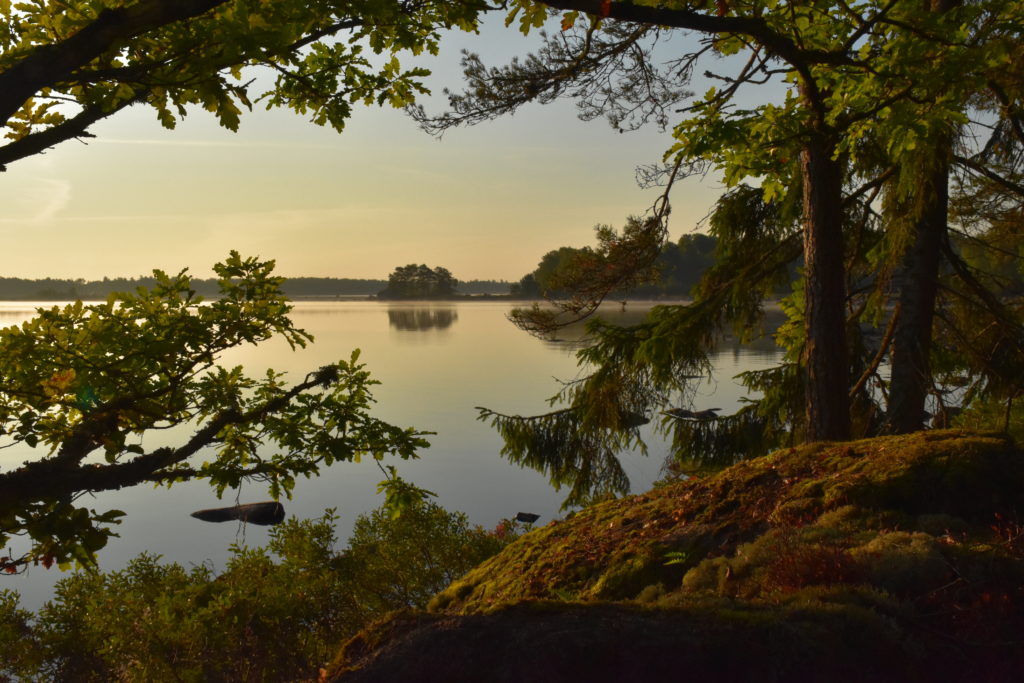
Morning light over lake Åsnen
Would you like to be part of the biggest network of Protected Areas in Europe?
Read all about it on this page.
Investing in young professionals working for Protected Areas
EUROPARC strongly believes that young professionals have a vital role to play in caring for Europe’s natural heritage. Like everything else, the future of Protected Areas relies on the young generation taking an active and informed role. Each year the EUROPARC Federation, with support from the Alfred Toepfer Stiftung F.V.S., awards three Alfred Toepfer Natural Heritage Scholarships to promising young conservationists, who are committed to working for the benefit of Protected Areas. The aim of the scholarships is to enhance international cooperation and to advance the quality, innovation and European dimension of Protected Area management.
Each scholarship is worth €3.000 and enables successful applicants to undertake a study visit on a particular theme to Protected Areas in European countries.
While there are many opportunities for students to get scholarships to improve their skills abroad, there are few for those who have already entered the working world. Hence, the aim of this scholarship is to give the opportunity to those young professionals that have chosen to develop a career in Protected Areas, to improve their skills and learn from other professionals by carrying out study visits to Protected Areas across Europe.
The Alfred Toepfer Natural Heritage Scholarship 2022
Deadline for applications 29th of April, 15:00 CET
The Alfred Toepfer Natural Heritage Scholarship is a great opportunity for young professionals who have chosen to develop a career devoted to our natural and cultural heritage. The winners of the Scholarship will have the chance to improve their skills and learn from other professionals, by carrying out study visits in European Protected Areas. The call is open to all young professionals working in topics related to Protected Areas in Europe. Conditions to apply:
- candidates must be under 35
- have a European nationality (see the list of countries from the Council of Europe)
- be employed by a Protected Area or nature conservation organisation or be employed by an organisation that delivers its work Protected Areas
Applications for study visits to prepare, or be any part of the delivery of master or doctoral thesis will not be considered.
Download the Guidelines, FAQs and an overview of the application form
ATS FAQs ATS Guidelines ATS Application Form example
>>>>> online application form <<<<<
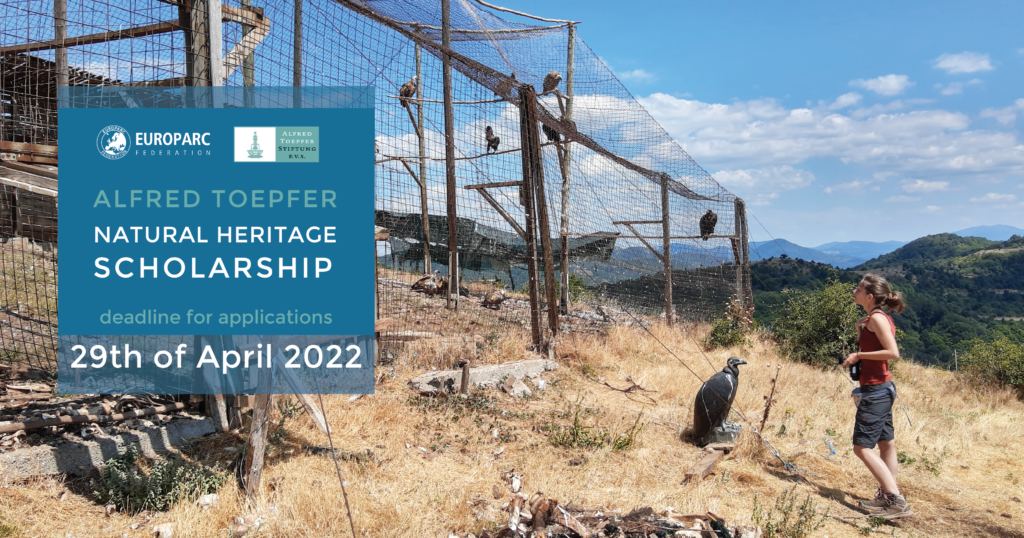
5 steps to win your Scholarship:
1) Choose one category
The application must address one of the following selected themes faced by Protected Area Management:
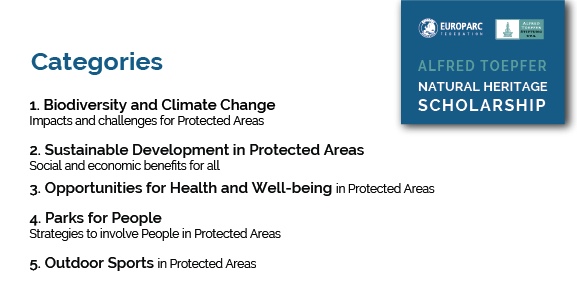
2) Apply
To apply, candidates must submit:
- Online application form – this form includes your Curriculum vitae, your motivation letter, the proposed programme of your study visit, and contact details of the Protected Areas you want to visit
- Proof of employment if pre-selected
Applications are due on 29th of April (15:00 CET) and must be submitted online. Download the complete Guidelines and access the online application form.
3) Sustainability
As a European wide network, international exchange is of high importance to EUROPARC. However, we also want to lead by example. This means critically looking at our practices and aiming to make them more sustainable. That is why for the 2022 call for scholarships, we ask applicants to consider how they can complete their study visits in the most sustainable way possible. For example through:
- Only visiting one Protected Area outside of your home country for a longer time period
- Using more sustainable means of transportation like public transport
- Offsetting your travel’s carbon emissions
Any creative ideas are welcomed! You can provide them in the special section on the application form.
4) Be awarded at EUROPARC Conference 2022
The winners of the Alfred Toepfer Natural Heritage Scholarship will be awarded in France, at the second EUROPARC Conference 2022. It is essential you are available to attend.
The Alfred Toepfer Stiftung E.V.S will generously cover your travel expenses and participation at Europe’s biggest gathering of Protected Areas professionals! The Conference will take place in Argelès-sur-Mer in France from 4 – 7 October 2022. The focus will be on Climate Change Adaptation. How can Protected Areas deal with Climate Change? What are the challenges and opportunities? What does successful adaptation look like? The EUROPARC Conference provides an excellent event for you to learn, network and share experiences on this exciting topic.
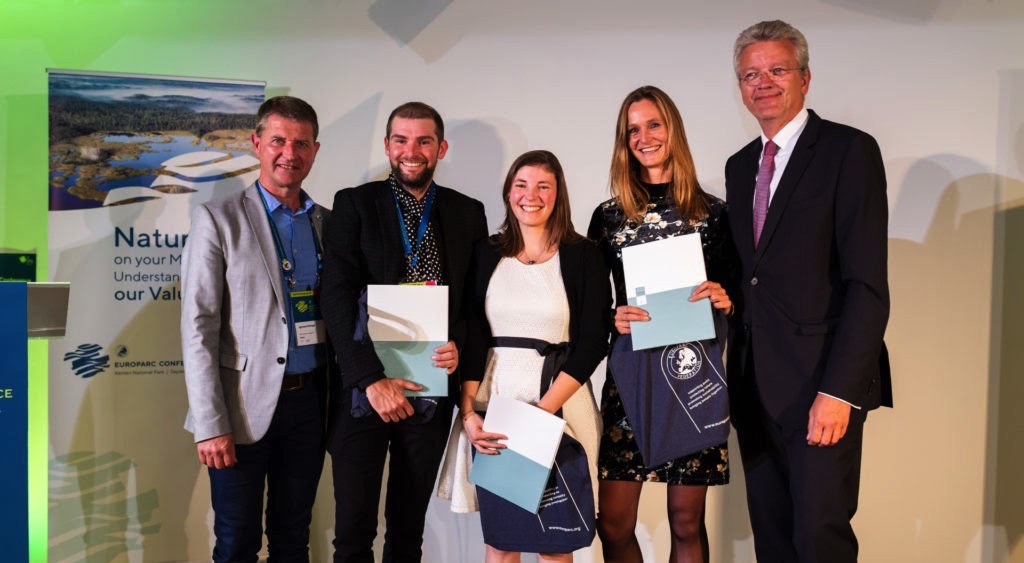
The winners of the Alfred Toepfer Natural Heritage Scholarship in Jurmala, Latvia – EUROPARC Conference 2019
5) Travel and Learn
The scholarship covers your travel costs to one or more protected areas in Europe. Visiting different countries enables you to gather new perspectives and deepen your subject of study. Check out the example of Marie Micol or Csaba Bereczki, who visited different Protected Areas in several countries, or Eduardo Batista who made a deep study in just one Protected Area.
You will find all the reports since 2007 in our library and on this page you can learn more about the past scholarship winners.
6) Share your results
After the trip, the scholars are expected to present the Federation their findings in a report and a short film. These reports are made available to EUROPARC members, as they are full of interesting facts on observation and solutions to common Protected Area management issues. Here’s some inspiration from Agné and Tymur!
For more information or questions, please contact communications@europarc.org.